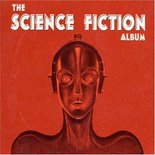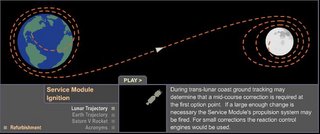Although it has changed a lot over the years and has become more mainstream and commercial,
Rolling Stone magazine still projects an irreverent, liberal, sarcastic, and sometimes smart-ass, hipper-than-thou image in much of its writing. I don’t subscribe any more, but I still read it occasionally, mostly for interviews with interesting people (e.g., Bono, Neil Young) and for articles on off-beat subjects.
So when I noticed a long feature article on NASA’s Mars plans in the current Rolling Stone, I bought it, not knowing quite what to expect. Space isn’t the usual beat for RS, but if they were to get a decent freelance writer, it could be an opportunity for some good mainstream media coverage of future Mars exploration possibilities. No such luck.
You can get an idea from the title and subtitle blurb for the article: “Mars or Bust: It will take fifty years, cost $500 billion and may ultimately prove impossible. But convinced that life on Earth is doomed, NASA is launching the most ambitious mission ever conceived: permanent colonies on the Red Planet.” Except for the fact that it doesn’t mention alien abductions, this could easily be the start of a
Weekly World News piece.
The article by Benjamin Wallace-Wells is long and covers a lot of topics, though not in a very well organized way. In addition to bashing NASA as an agency that has lost its focus, it talks about the Vision for Space Exploration, the Crew Exploration Vehicle, recycling urine for drinking water, making rocket fuel from rocks on Mars, “flat-out weirdos” in the Mars underground movement, the likelihood of disaster (psychological and/or technological) on a 2.5 year Mars mission, problems with zero-G, and the fact that some key technologies needed for manned Mars missions don’t exist yet. NASA may have indeed lost its focus (or more accurately was given too many missions with no coherent direction), and I'm not suggesting that sending humans to Mars is a trivial problem, but many of the key facts are wrong in content and/or context.
The final section of the article is called “the obsession” and focuses mainly on “Mars obsessives” (especially Robert Zubrin and his “wacky text”
The Case for Mars), and the ironic twist that with Mars as an official NASA goal, Zubrin has consulted with NASA and “the agency’s engineers take his calculations seriously.” It even mentions the
Mars Society’s arctic research center (conceived in “Zubrin’s fevered imagination”), but as with most topics in the article, it presents it in a mocking tone, as if to say “are these people wacked, or what?”
One amusing point is in the description of how run-down and retro the astronaut training facilities are at Johnson Space Center. “And when the astronauts practice weightlessness, they do it, wearing space suits, in what is basically a twenty-foot deep swimming pool,” the author writes. That certainly is retro, but doesn't he realize this is only because Congress has consistently voted down construction of our giant zero-G anti-gravity chamber? (Um, that's a joke.)
I guess I was expecting too much of RS, but the cover does have a fabulous picture of Mariah Carey.








